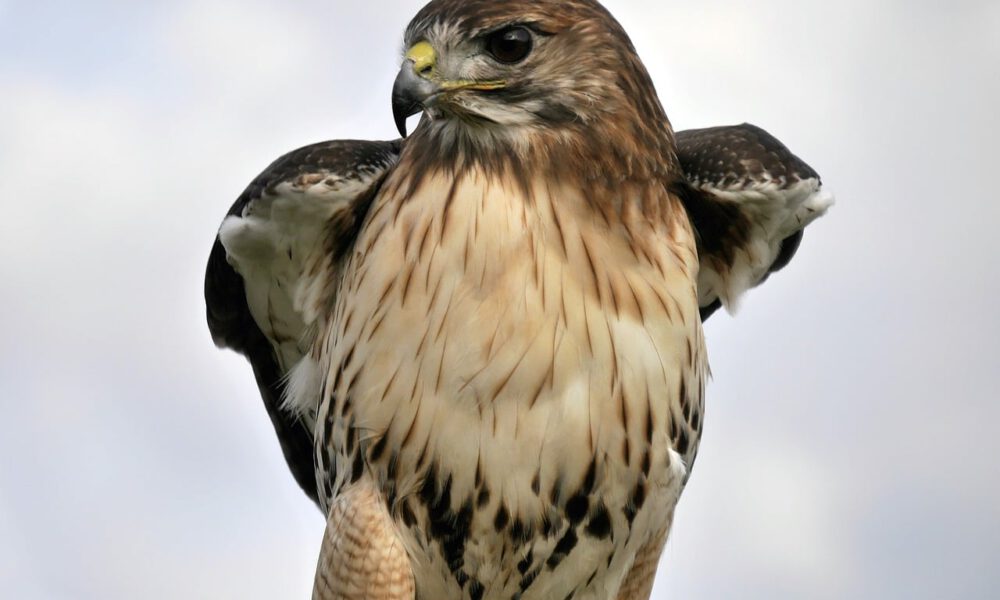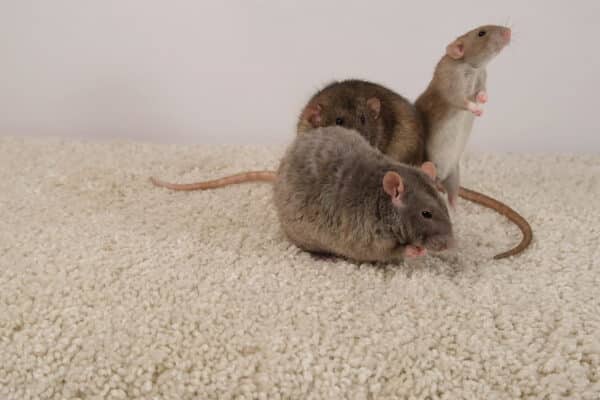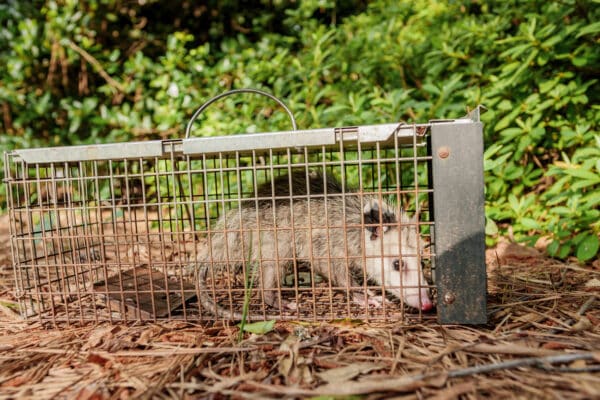
Surrounded by the Appalachian Mountains and the Gulf Coast, Alabama is the perfect nesting place for all birds of prey. Hawks are no exception. In fact, there are several types of Hawks in the state that enjoy the vast woodlands, wildlife refuges, wetlands, and more.
Seven species call Alabama home, but the two main categories of hawks are of the genus buteo an accipiter.
Dictionary.com defines each as the following.
Buteo: “any of several buzzards or hawks.”
Accipiter: “having short, rounded wings and a long tail and feeding chiefly on small mammals and birds.”
Learn more about the main species of hawks in Alabama and their descriptions here, with Covenant Wildlife Removal.

Main Species of Hawks in Alabama
Hawks are one of the most wondrous birds. These diurnal (active in the daytime) birds all may have keen eyesight, taloned feet, and hooked beaks. But there is great variety within the various types of hawks.
All hawks are strong and powerful with talons and beaks that help them rip flesh. They are also swift fliers that have been clocked at over 150 mph when they are diving for prey.
Fun Fact: Hawk see in color!
Here are the hawks you may be lucky enough to watch in action in Alabama.
Red-Shouldered Hawk
buteos
Length: 16.9-24.0 in
Weight: 17.1-27.3 oz
Wingspan: 37.0-43.7 in
Living in areas full of forests and water sources like rivers and swamps is the red-shouldered hawk. This variety is easy to spot for more than one reason. They are whistle callers that sound like “kee-ahh,” and they will be found circling their nesting grounds. They are medium-sized hawks with sturdy bodies and iconic broad, rounded wings. Furthermore, their wingtips are translucent, setting them apart from other hawks. The red-shouldered hawk boasts stunning rusty-red plumage on their backs and chest with dark brown and white checkered wings.
Fun Fact: Red-shouldered Hawks are monogamous breeders.

Red-Tailed Hawk
buteos
Length: 17.7-25.6 in
Weight: 24.3-51.5 oz
Wingspan: 44.9-52.4 in
The second largest of Alabama’s hawks is the red-tailed hawk. They have pale underbellies and uppers of a deep brown. The upper feathers and tail feathers are a warm, brick red. Red-tailed hawks are both abundant and common to see. They circle above open fields with high perching spots where they will look for reptiles, rabbits, and mice for a meal.
Fun Fact: Their broad and short tails set them apart from other hawks.
Cooper’s Hawk
accipiter
Length: 14.6-17.7 in
Weight: 7.8-24.0 oz
Wingspan: 24.4-35.4 in
With short wings and long tails, these hawks are blueish gray as an adult. The Cooper’s hawk will prey upon the jays and the robins of the woods and mature forests for dinner.
Fun Fact: Cooper’s Hawks have an unusual flight pattern. They beat their wings several times, and then they glide. And they are often called the “blue darter.”
Sharp-Shinned Hawk
accipiter
Length: 9.4-13.4 in
Weight: 3.1-7.7 oz
Wingspan: 16.9-22.1 in
This accipiter variety of hawk is much like the Cooper’s Hawk but is smaller and less abundant. They have the same appearance and are often called “Sharpies.” Sharp-shinned hawks will search for sparrows, robins, and other songbirds.
Northern Harrier
harrier
Length: 18.1-19.7 in
Weight: 10.6-26.5 oz
Wingspan: 40.2-46.5 in
As the only member of the harrier genus in North America, they have broad wings, long and rounded tails. In addition, their faces look more like an owl than a typical hawk’s face. These harriers have sensitive hearing that helps find those mice and voles that hide in the forests. Both males and females have black-banned tails with a bright white blotch near the rear of the tail. However, the males are grey and white, and the females are brown. Birdwatchers may spot these hawks in grasslands, prairies, marshes, and fields flying with their wings in a V-shape.

Broad-Winged Hawk
buteos
Length: 13.4- 17.3 in
Weight: 9.3-19.8 oz
Wingspan: 31.9-39.4 in
The broad-winged hawks are the smallest of their buteos genus, with reddish-brown feathers on the heads and pale underbellies with barring. And their tales have black and white bars. Staying out of sight most times, you may be lucky enough to see this hawk dive straight down to catch its prey.
Rough-Legged Hawk
buteos
Length: 18.5-20.5 in
Weight: 25.2-49.4 oz
Wingspan: 52.0-54.3 in
With feathers running all the way down their legs to the talons, the rough-legged hawk is more of a northern hawk and is only occasionally spotted in Alabama. They have longer wings and tails than most buteos hawks and prey on small rodents.
What to Do If a Hawk Perches in Your Yard
Hawks are an excellent example of critter control for farms and more. However, if you happen to have a toy dog or just plain don’t want the hawk there, getting rid of it can be tricky. Rarely will a hawk build a nest in a tree that is anywhere close to people? But if they do, there is really not much danger.
Do you have a toy-sized dog? You may want to be outside when the pup is out there. Other than that, these hawks may just be helping you with your underlying rodent problem.
Then, if you still want the hawk to go away, make sure you do not have a rodent issue. Now, that is challenging if you live in a wooded area. But the experts at Covenant Wildlife Removal can show you how to keep rodents off your property and more.

Prevent Hawks from Hanging Around Your Property
Although most birds are entertaining to watch, nurturing, and beautiful, there is a line a homeowner must draw. Birds of prey may be stunning to watch in flight, but you sure do not want them hanging around your property watching for a morsel to grab.
Here are some of our top suggestions to keep hawks from taking a perch in your trees.
- Remove bird baths and feeders, keeping them 30 feet from your house. Small birds bathing are a prime food source for hawks.
- Did you know large pets in the yard and around the home help keep the birds away?
- Reflective gazing balls and mirrored pinwheels keep the birds away.
- Use humane bird spikes on the nesting spots, like the rounded tip spikes.
- Use a metal mesh to block chimney holes, dryer vents, and pipe fittings, so the birds cannot nest there and cause further damage.
- Get all the rodents out of your yard. No scurrying meals equal no hawks.
- Hire a wildlife removal company to rid your property of unwanted rodents and small meals for the hawks in your area.
Covenant Wildlife Removal Deters Hawks in Alabama
Do you have a hawk issue on your property? Then you probably have a rodent issue too. Covenant Wildlife Removal is here for all your wildlife removal needs. We promise to use safe and humane methods whenever possible and abide by the local laws. Our team of expertly trained specialists is ready to help you reclaim your home when unwanted guests make their way onto your property.
Every day we remove nests, pests, and critters of all sorts from Alabama homes. There is just about nothing we have not seen or removed. And if the animal is protected, we can relocate the critter to a shelter or state-approved area for rehabilitation and relocation.
Click here for a free inspection with our expert team of wildlife removal specialists. Covenant Wildlife Removal will be there right away for all your pest removal needs.
Join Covenant Wildlife Removal to Learn More About Hawks in Alabama
Should you find a family of rodents or a nest on your porch that is inhabited or troublesome, call the professionals at Covenant Wildlife Removal to determine the next course of action. The expertly trained technicians at Covenant know the laws and rules surrounding rodents, nests, and bird removal and will treat them humanely and safely.
You can count on the Covenant team to assess the situation, remove any food source rodents and nests, clean up the area, and prevent birds from returning. After all, it is their specialty.
Covenant Wildlife Removal is a top-rated local family-owned, full-service wildlife trapping, removal, and repair service. We can remove a rat infestation before it becomes an invitation for dinner to the local hawks.
Contact Covenant Wildlife for all your wildlife removal needs today.




